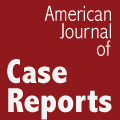Get your full text copy in PDF
Katarzyna Pietrzyk-Orkisz, Monika Talarowska, Marlena Zajączkowska, Piotr Gałecki
Med Sci Tech 2015; 56:66-72
DOI: 10.12659/MST.895364
BACKGROUND:
Progressive supranuclear palsy (PSP) is a rapidly progressing primary neurodegenerative brain disease that produces an akinetic-rigid form of Parkinsonism characterized by abnormal posture, with early falls, supranuclear gaze palsy, and subcortical dementia. Due to its etiology, it is classified as a “tauopathy”. The location of the pathology accounts for the clinical features. The aim of this study was to present a case report of a patient in whom rapid course of the disease was observed and to demonstrate the diagnostic difficulties of PSP.
CASE REPORT:
A female patient 54 years of age had initial symptoms of mood and behavioral disorders (apathy, withdrawal, loss of interest, bizarre behavior). Due to these symptoms, frontotemporal dementia was initially suspected. Cognitive dysfunction and subsequent impaired balance and posture (leading to falls) resulted in neurological hospitalization with observation in the direction of spongiform encephalopathy. During psychiatric observation on the basis of significant progression of symptoms and additional tests (e.g., imaging and psychological examination), the patient was diagnosed with progressive supranuclear palsy.
CONCLUSIONS:
The clinical diagnosis can be difficult to make, which results in PSP being under-diagnosed and often misdiagnosed. Therefore, in case of doubt, it is necessary to conduct a detailed diagnosis. Structural neuroimaging studies, although not specific for PSP, may be of some assistance in making the diagnosis.
Keywords: Accidental Falls, Ophthalmoplegia, Supranuclear Palsy, Progressive



